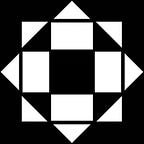Fat and Felt, Fact or Folklore
Joseph Beuys and the healing process of remythologising the post-war European psyche
There’s no denying that Joseph Beuys is among the most important artists of the twentieth-century. He can be thought of as the spiritual successor to Marcel Duchamp — both artists made art that pushed the very definition of what art was and what it could be. The major innovation embodied in their work is that art can exist as a concept beyond materialism and the moment. With them, art became a process that begins in the thoughts of the artist and continues in the mind of the viewer, or experiencer, after it’s transferred through various media. The process of art doesn’t require a defined beginning or end and, in a way, has been an ongoing story that started with the first marks left on neolithic cave walls.
Joseph Beuys is known for his use of unconventional media including, galvanised metal, gold leaf, compressed peat, foodstuffs, blood, bees, barbeques, brooms, basalt, vans, dog sleds, wild coyotes, living horses, dead hares, doors, blackboards, lemons, lectures, gestures, and storytelling… but perhaps he’s best known for his signature works in fat and felt — recurring motifs he would repeatedly return to. That’s why one iteration of Fat Chair was chosen for the cover image of The Essential Joseph Beuys, the first major…
